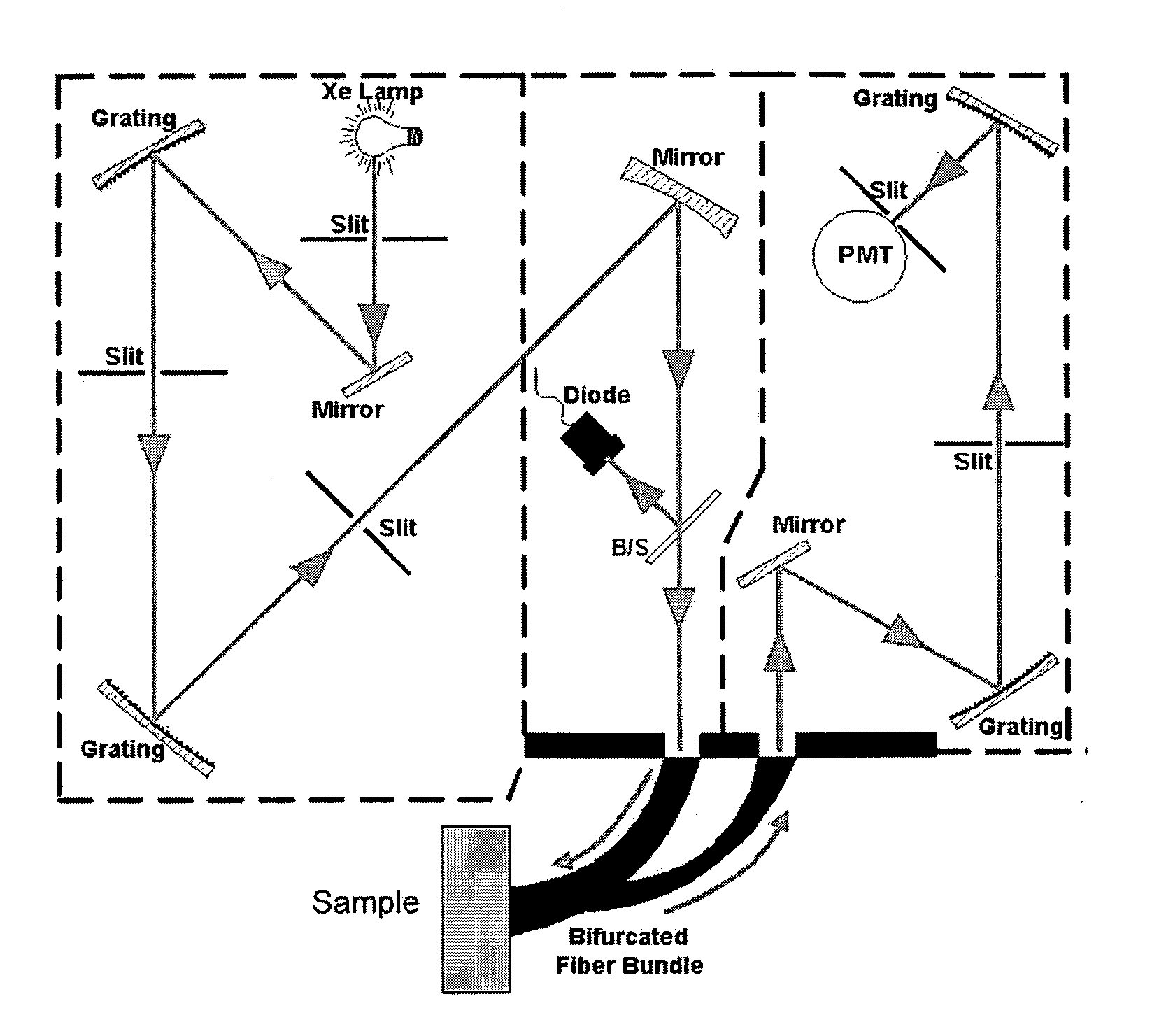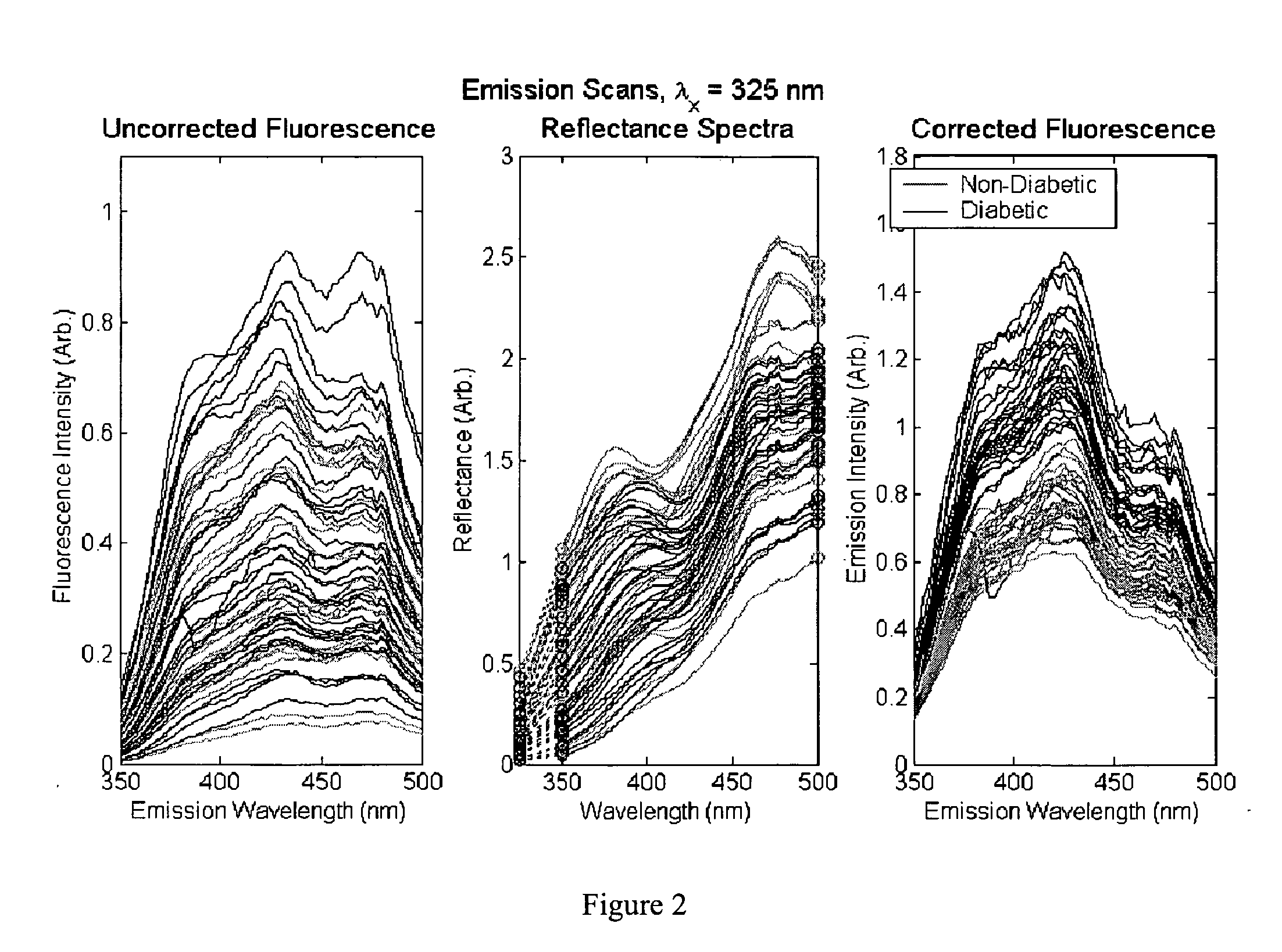Determination of a measure of a glycation end-product or disease state using tissue fluorescence
a tissue state and fluorescence technology, applied in the field of tissue state determination from tissue fluorescence, to achieve the effect of reducing determination errors and impaired glucose toleran
- Summary
- Abstract
- Description
- Claims
- Application Information
AI Technical Summary
Benefits of technology
Problems solved by technology
Method used
Image
Examples
example embodiments
[0071]FIGS. 6-10 depict the results of a large calibration study conducted over a period of 3 months. In these experiments, a commercially-available fluorimeter (SkinSkan, Jobin-Yvon, Edison, N.J., USA) was used to acquire noninvasive fluorescence and reflectance spectra from the skin of the volar forearm in study participants. In the training phase, 57 Type 2 diabetic and 148 nondiabetic subjects were measured by fluorescence spectroscopy. Study participants were selected on the basis of their age and self-reported diabetes status. In addition to the subjects' own report of their disease status, FPG and OGTT reference information were also collected for all diabetics and a fraction of the nondiabetics in the study. For these individuals, FPG and 2-hour OGTT values were collected on each of two different days. Spectroscopic measurements were collected on a third day, and no specific fasting requirements or other pre-test preparations were imposed on the study participants.
[0072] In...
PUM
 Login to View More
Login to View More Abstract
Description
Claims
Application Information
 Login to View More
Login to View More - R&D
- Intellectual Property
- Life Sciences
- Materials
- Tech Scout
- Unparalleled Data Quality
- Higher Quality Content
- 60% Fewer Hallucinations
Browse by: Latest US Patents, China's latest patents, Technical Efficacy Thesaurus, Application Domain, Technology Topic, Popular Technical Reports.
© 2025 PatSnap. All rights reserved.Legal|Privacy policy|Modern Slavery Act Transparency Statement|Sitemap|About US| Contact US: help@patsnap.com



